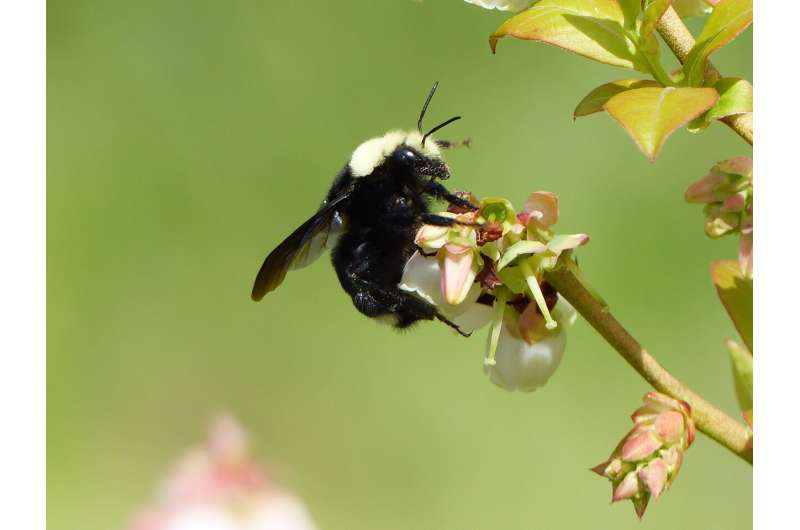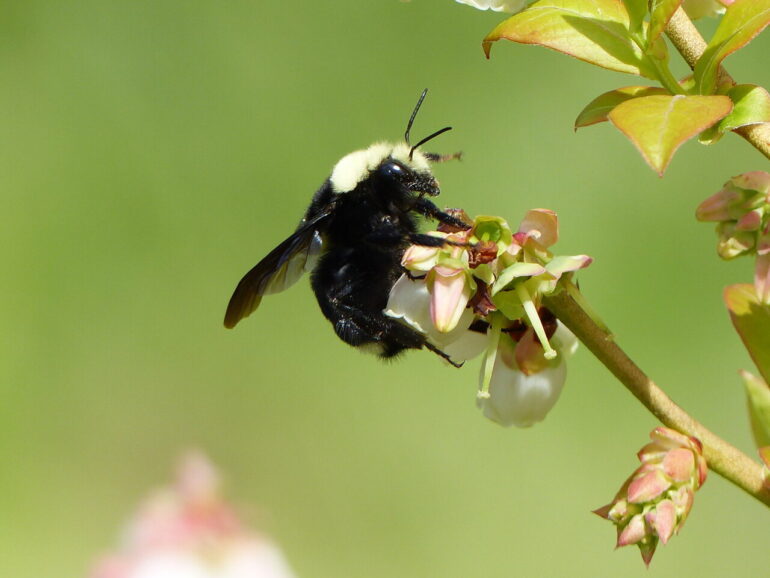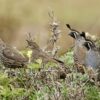Native bees in the Oregon Coast Range are diverse and abundant in clearcut areas within a few years of timber harvest but their numbers drop sharply as planted trees grow and the forest canopy closes, research by Oregon State University shows.
The findings are important for understanding the roles forest management might play in the conservation of a crucial pollinator group, the researchers said.
The study, led by graduate student Rachel Zitomer and Jim Rivers, an animal ecologist in the OSU College of Forestry, was published in Ecological Applications.
“The research demonstrates that Douglas-fir plantations develop diverse communities of wild bees shortly after harvest,” Rivers said. “Management activities that promote open conditions and enhance floral resources in the initial years following harvest are likely to promote bee diversity in intensively managed forest landscapes.”
Despite widespread concern about how human activity may be driving global declines in pollinator species, little is known about the impacts of land management practices on wild bees outside of agricultural systems, the scientists note.
Closing that knowledge gap is critical, they say, because bees pollinate many of the flowering plants that make up ecosystems and support food webs.
In the spring and summer of 2018 and 2019, the scientists looked at native bee communities in 60 Douglas-fir stands of varying ages across a time frame representative of a typical 40-year harvest rotation.

Oregon native bee. © James Rivers
The authors found that the total number of bees and the number of different bee species declined markedly with stand age, falling an average of 61% and 48%, respectively, for each five-year increment after harvest.
“Our results are important for forest managers because they indicate that bees do use intensively harvested stands, and that the window for bee conservation measures is restricted to a relatively short time period,” Zitomer said. “Our research is one of the first attempts to quantify how native bee communities change over time after one of the dominant forest disturbances that take place in the Oregon Coast Range.”
Animal pollinators enhance the reproduction of nearly 90% of the Earth’s flowering plants, including many food crops, and are an essential component of insect and plant biodiversity. Native insect pollinators, primarily bees, are estimated to contribute more than $3 billion per year in commercial pollination services in the United States, Zitomer said, and are essential for the functioning of natural ecosystems and food chains. Oregon is home to more than 600 species of native bees, and nearly a quarter of them are found in recently harvested forests.
“Wild bees are the top pollinators in most temperate regions, and widespread declines have prompted worries about food security as well as ecosystem function,” Rivers said. “Understanding bees’ habitat requirements and how they respond to human activity is imperative if we want to take effective conservation measures.”
Recent studies have indicated that moderately reducing the application of herbicides in the initial years after harvest can enhance pollinator species richness, in some cases without compromising revenue potential, the authors say.
“That could be a win-win for timber production and biodiversity conservation,” Zitomer said.
Including bee-pollinated plant species in the seed mixes used for revegetation along roadsides and at log landings is another way to help ensure maximum bee presence after timber harvesting, the researchers note. A landing is where logs are placed prior to loading on trucks.
More information:
Rachel A. Zitomer et al, Bee diversity decreases rapidly with time since harvest in intensively managed conifer forests, Ecological Applications (2023). DOI: 10.1002/eap.2855
Provided by
Oregon State University
Citation:
Bees flock to clearcut areas but numbers decline as forest canopy regrows, research shows (2023, April 13)



